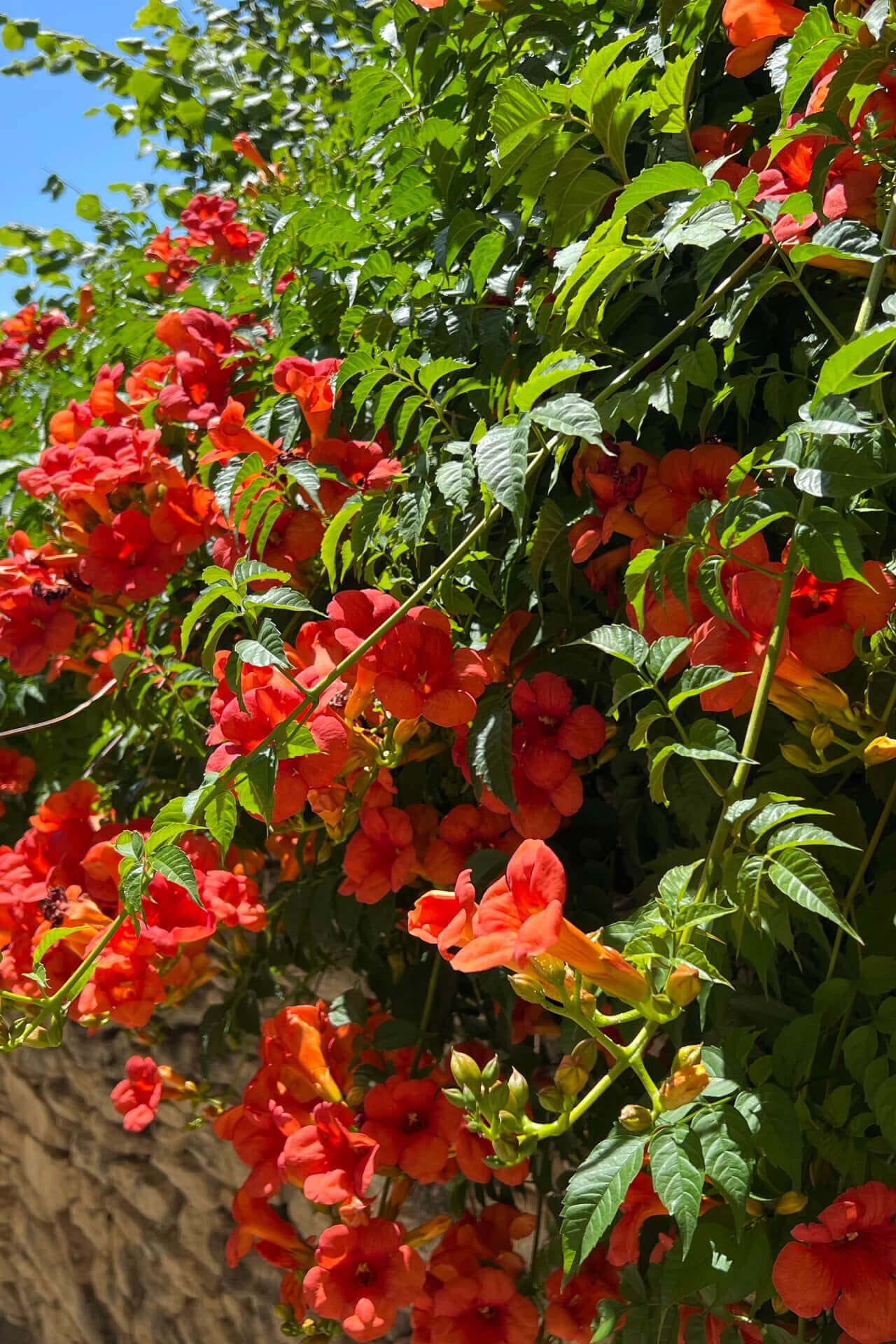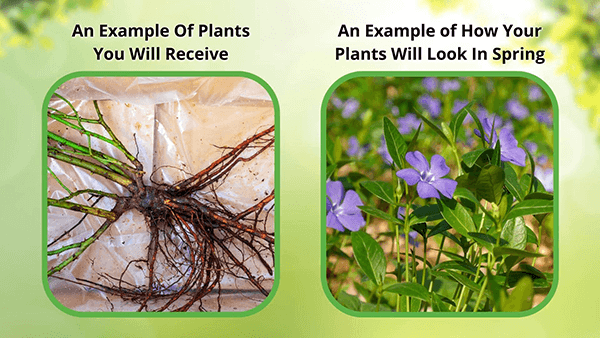Trumpet Vine
Trumpet Vine
| Order | Percentage Discount | ||
|---|---|---|---|
| 2-5 | 25% Off | ||
| 6-10 | 30% Off | ||
| 11-25 | 35% Off | ||
| 26-50 | 45% Off | ||
| 51+ | 65% Off | ||
Couldn't load pickup availability
5-7 Days
Under 12"
Full Sun
4-9
Groundcover
Bare-root
OR.
Trumpet Vine
Trumpet Vine is a deciduous woody vine native to the southeastern United States. It is a fast-growing plant that can grow up to 30 feet tall and 6 feet wide. It is well-known for its beautiful trumpet-shaped flowers that bloom in shades of red, orange, and yellow during summer.
Trumpet Vine's Characteristics
It has large, dark green leaves that can grow up to 6 inches. The flowers, which are the most notable feature of the plant, grow in clusters at the tips of the branches and can measure up to 3 inches long. They have a trumpet-like shape and a flared mouth, with a five-lobed corolla that opens to reveal the stamen and pistil. Long, slender seedpods follow the flowers.
Cultivation and Care
It is a hardy plant that is relatively easy to grow, making it a popular choice for home gardeners. It prefers full sun and well-drained soil. The plant can be propagated from seeds or cuttings and trained to climb on trellises, walls, or fences.
Benefits
Aside from its aesthetic appeal, Trumpet Vine also offers several benefits. It is a popular choice for attracting hummingbirds, bees, and butterflies to the garden, as the nectar-rich flowers provide an essential food source for these pollinators.
The plant is also known for its medicinal properties. Traditional medicine uses it to treat various ailments, including fever, pain, and inflammation.
This Is How Your Plants Will Look upon Delivery
Bloom/Foliage Color
Orange
Shipping date depends on the date displayed and chosen when you order from the product's page.
We only accept returns on plants verified dead. If you think your plants have died, we offer a 1 year warranty, please use use this File a Claim Link to verify dead plants and start with return warranty process.




